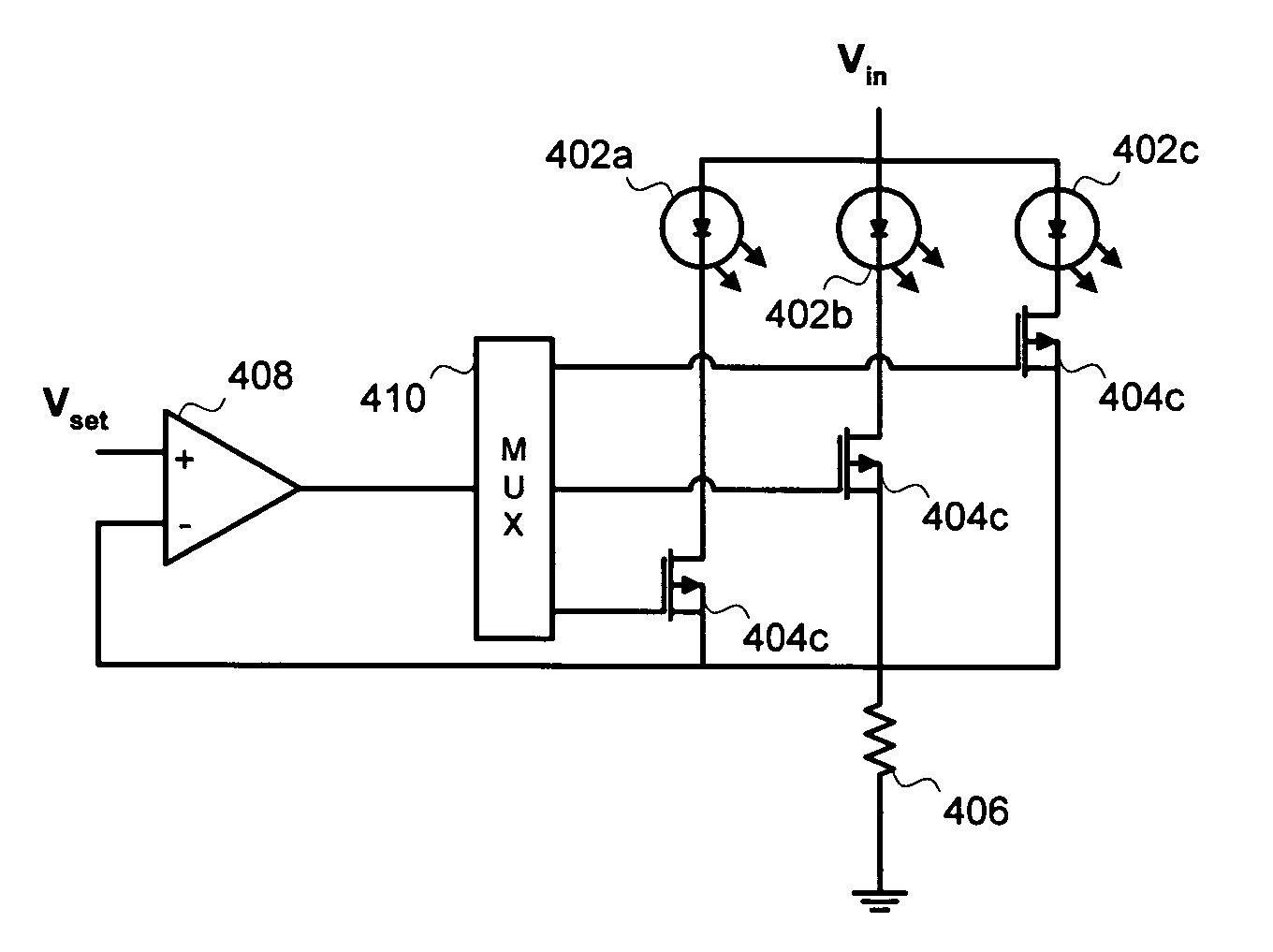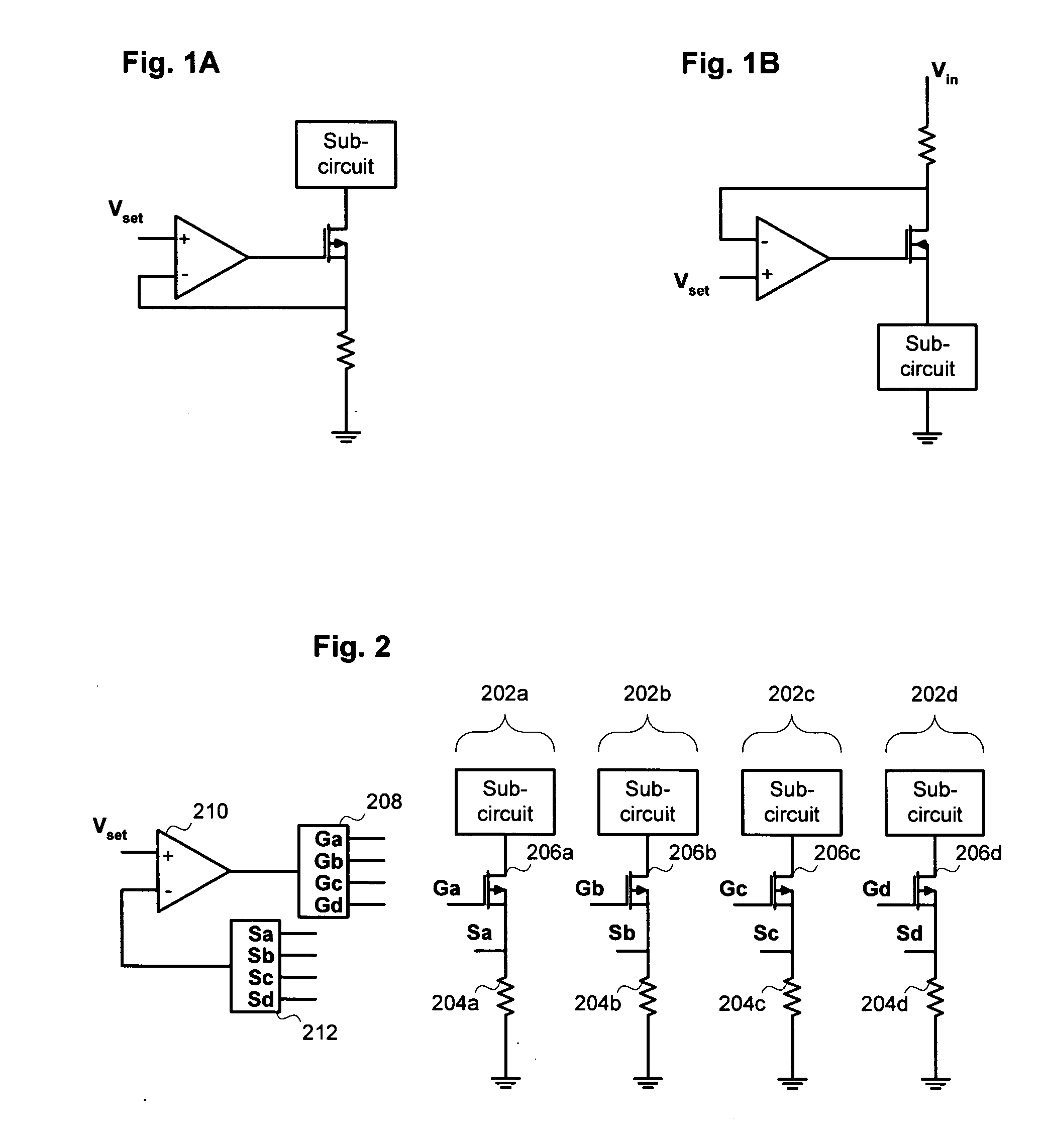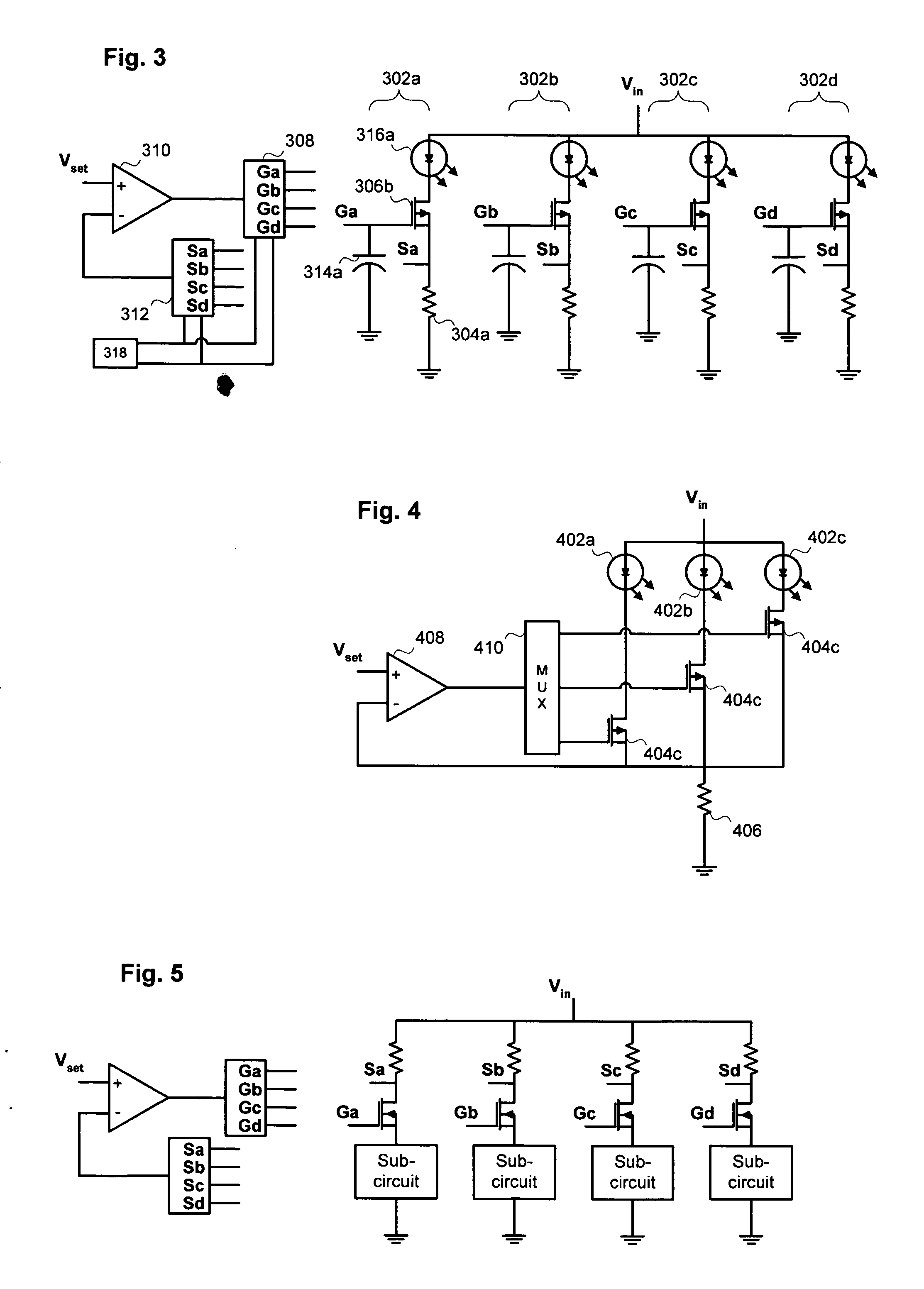Single, multiplexed operational amplifier to improve current matching between channels
an operational amplifier and channel technology, applied in the direction of electric variable regulation, process and machine control, instruments, etc., can solve the problems of unavoidable manufacturing variations, random offset within each amplifier is more difficult to correct, and often the main contributor to mismatch, so as to reduce the refresh frequency of current sinks, eliminate the contribution of amplifier offset to current mismatch, and reduce power consumption
- Summary
- Abstract
- Description
- Claims
- Application Information
AI Technical Summary
Benefits of technology
Problems solved by technology
Method used
Image
Examples
Embodiment Construction
[0014] The present invention includes a multi-channel current sink. As shown in FIG. 2, a representative implementation of the multi-channel current sink includes a series of four channels, labeled 202a through 202d. The number of channels 202 is entirely implementation dependent and can be more or less than the four shown. Each channel 202 includes a sense resistor (labeled 204a through 204d) and a MOSFET (labeled 206a through 206d). As shown in FIG. 2, a first multiplexor 208 is used to connect the output of an operational amplifier 210 to the gate of one MOSFET 206. At the same time, a second multiplexor 212 connects a feedback sense node (the voltage over the corresponding resistor 204) of the same channel 202 to the negative input of the amplifier 210.
[0015] Multiplexor 208 and multiplexor 212 are controlled so that each channel is selected in sequence. When selected, a particular channel 202 is connected to the amplifier 210 and behaves exactly as the circuit in FIG. 1A. This...
PUM
 Login to View More
Login to View More Abstract
Description
Claims
Application Information
 Login to View More
Login to View More - R&D
- Intellectual Property
- Life Sciences
- Materials
- Tech Scout
- Unparalleled Data Quality
- Higher Quality Content
- 60% Fewer Hallucinations
Browse by: Latest US Patents, China's latest patents, Technical Efficacy Thesaurus, Application Domain, Technology Topic, Popular Technical Reports.
© 2025 PatSnap. All rights reserved.Legal|Privacy policy|Modern Slavery Act Transparency Statement|Sitemap|About US| Contact US: help@patsnap.com



